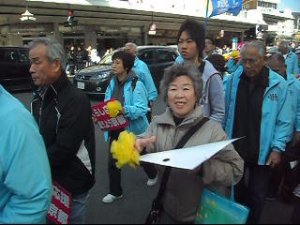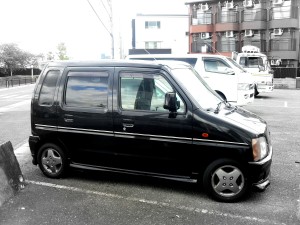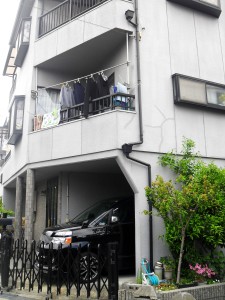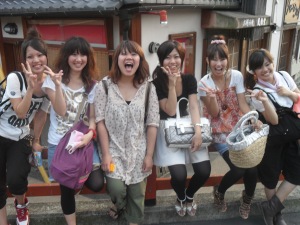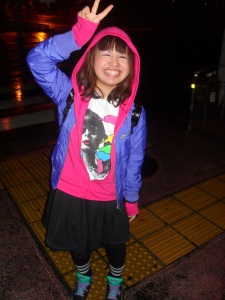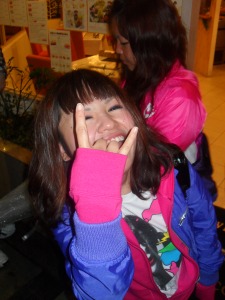Impressions of Japan, where could I possibly start..
I’ve already been here for a semester but when I came back from winter break (I went home to London for a month) a whole new wave of impressions hit me as soon as I left the aircraft in Osaka airport.
The first thing that caught my attention was that the Japanese split arrivals not into “nationals” and “foreigners”, but into “nationals” and “aliens”. Perhaps this was due to an unfortunate translation mistake or maybe it hints at the historical implications and linguistic lack of space concerning the word “foreign” and resulting in the impression that the Japanese feel more distant to foreigners than people in other countries do. The whole “gaijin” (outsider) phenomenon is a common topic among international students. The ueber-polite Japanese seem to still hold a certain wariness towards anyone that doesn’t look Japanese. My friend recently complained about the fact that no Japanese person dared sit next to him on a crowded bus. The seat next to him was left vacant.
It seems to me that the Japanese have a very strict sense of morals and customs. A great sense for propriety. Who ever heard of a train having the slightest delay or there being a single scrap of paper or rubbish on the pavement? When I went to Spa World a fantastic sign was posted outside the establishment.
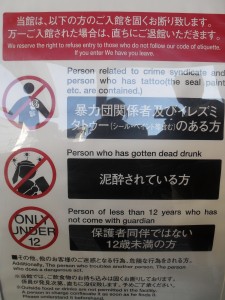
“We reserve the right to refuse entry to those who do not follow our code of etiquette.
If you enter we have you leave.”
This is a great example of the Japanese fascination with acting in a wholesome manner. Underneath this introductory statement is a list of people who should refrain from coming.
“Person connected to crime syndicate and person who has tattoo.”
“Person who has gotten dead drunk.”
On another topic, once inside we decided to try the okinomiyaki.

Six months after I first tried the Japanese cuisine, I can honestly conclude that okinomiyaki is my favourite dish and however much sushi I try, I will never like it.
Trying to describe okinomiyaki to friends and family at home has been quite a task. “Its like a pancake, but made out of cabbage and batter. And there’s meat inside. With sauce on top!”
Okinomiyaki will definitely be one dish that I will sorely miss.
Walking along one of the many busy roads in Osaka, my friend and I came across quite a peculiar image. At the side of the road about twenty traffic cones were positioned next to the pavement. Behind of each of these very pointless seeming traffic cones, there was a traffic attendant stationed. The men stood straight and looked determinedly ahead in their uniforms.
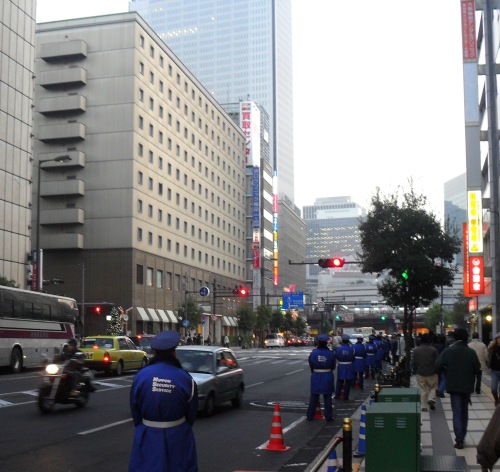
Japan is famous for providing an enourmous amount of jobs to its citizens which in turn has made the economy boom. All over Japan one can witness jobs that the government of their own country would never have thought of. I’ve heard that there are hundreds of roads leading out into the countryside but in truth not leading anywhere. They just end.
What I find fantastic however is that the Japanese don’t seem to mind what they do. It seems to me that whatever their job, whether it is working at McDonalds, guiding people over a three metre crossing or working as a CEO, they are all intent on what they’re doing and try to do their best. I think that picture proves how well the government in Japan is managing to distribute jobs. Not only does almost everyone in Japan seem to have a job, they seem to be happy to be doing whatever they’re doing. When you walk into the Mcdonalds at university, the staff are extremely friendly and helpful. As I sat down to eat my chicken burger the other day, I took off the mayonaise. Almost immediatly one of the McDonald staff members came running up to me, asking whether they had made a mistake, wheher I had wanted the burger without mayonaise and finally whether she could possibly bring me a new one. I sat there in shock at how kind she was being while I had simply been too lazy to ask for the burger without the mayonaise. I muttered a pathetic “daijoubu desu” which was greeted with a deferential bow and a smile. This was unlike anything I’m used to in England. People working in fast food restaurants are known to be unhappy stressed out people, who would rather spit in your food than offer you a new one because you didn’t happen to like it. It seems to me as if the Japanese are passionate about everything they set out to do, whether an illusion or not, they would never have let you believe that they weren’t making their best effort.
Impressions never end. Many may be uneducated, ignorant and faulty, but all are important and tell you a lot. I hope to make many more.




